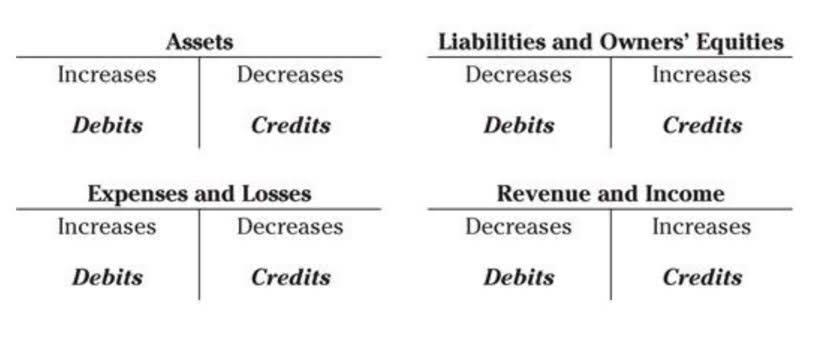What Is Equity, and How Do You Calculate It? Bench Accounting

Shareholder equity can also be expressed as a company’s share capital and retained earnings less the value of treasury shares. Though both methods yield the exact figure, the use of total assets and total liabilities is more illustrative of a company’s financial health. The information needed to derive total equity can be found on a company’s balance sheet, which is one of its financial statements. The asset line items to be aggregated for the calculation are cash, marketable securities, accounts receivable, prepaid expenses, inventory, fixed assets, goodwill, and other assets.

Example #1: Issuing more stock
Stockholders’ equity is a company’s total assets minus its total liabilities. If a company does not have enough cash flow or assets to cover their liabilities, they are in what is known as “negative equity.” Every accounting period, there are entries on the balance sheet that CARES Act indicate an increase or decrease in this figure.
What Are the 3 Elements of the Accounting Equation?

As referred above, stockholders’ equity can be calculated by taking the total assets of a company and subtracting liabilities. Stockholders’ equity is also referred to as stockholders’ capital or net assets. Unlike shareholder equity, private equity is not accessible to the average individual. Only “accredited” investors, those with a net worth of at least $1 million, can take part in private equity or venture capital partnerships. For investors who don’t meet this marker, there is the option of private equity exchange-traded funds (ETFs). Venture capitalists (VCs) provide most private equity financing in return for an early minority stake.
Which of these is most important for your financial advisor to have?
For example, the equity of a company with $1 million in assets and $500,000 in liabilities is $500,000 ($1,000,000 – $500,000). These may include loans, accounts payable, mortgages, deferred revenues, bond issues, warranties, and accrued expenses. If a business buys raw materials and pays in cash, it will result in an increase in the company’s inventory (an asset) while reducing cash capital (another asset). Because there are two or more accounts affected by every transaction carried out by a company, the accounting system is referred to as double-entry accounting.
- The asset line items to be aggregated for the calculation are cash, marketable securities, accounts receivable, prepaid expenses, inventory, fixed assets, goodwill, and other assets.
- They represent returns on total stockholders’ equity reinvested back into the company.
- All of the asset and liability line items stated on the balance sheet should be included in this calculation.
- Its total shareholders’ equity or assets minus liabilities was therefore $273 billion at that time.
- People used to get pieces of paper called share certificates (shown above) to show that they actually owned shares of a company.
- This is the percentage of net earnings that is not paid to shareholders as dividends.
Great! The Financial Professional Will Get Back To You Soon.

Many businesses don’t officially start keeping track of the value of their equity until they incorporate. This formula works regardless of whether you’re a Fortune 500 company or a one-person show with a side hustle. Get free guides, articles, tools and calculators to help you navigate the financial side of your business with ease. The magic happens when our intuitive software and real, human support come together.
This shows how well management uses the equity from company investors to earn a profit. Part of the ROE ratio is the stockholders’ equity, which is the total amount of a company’s total assets and liabilities that appear on its balance sheet. For this reason, many investors view companies with negative shareholder equity as risky or unsafe investments. Shareholder equity alone is not a definitive indicator of a company’s financial health. By comparing total equity to total assets belonging to a company, the shareholders equity ratio is thus a measure of the proportion of a company’s asset base financed via equity. Shareholders’ equity can be calculated by subtracting its total liabilities from its total equity formula total assets, both of which are itemized on a company’s balance sheet.

Real-World Example of the Accounting Equation
- Sam has $75,000 worth of equity in the home or $175,000 (asset total) – $100,000 (liability total).
- The stockholders’ equity account is by no means a guaranteed residual value for shareholders if a company liquidated itself.
- As per the formula above, you’ll need to find the total assets and total liabilities to determine the value of a company’s equity.
- Liabilities are obligations that the company owes to external parties, such as loans, accounts payable, and accrued expenses.
- When an investment is publicly traded, the market value of equity is readily available by looking at the company’s share price and its market capitalization.
- The original source of stockholders’ equity is paid-in capital raised through common or preferred stock offerings.
However, low or negative stockholders’ equity is not always an indication of financial distress. Newer or conservatively managed companies may have lower expenses, thereby not requiring as much capital to produce free cash flow. Below that, current liabilities ($61,000) are added to long-term liabilities ($420,000) in reaching a total liabilities number of $481,000. Total stockholders’ equity is $289,000 in the example, equal to total assets of $770,000 less total liabilities of $481,000.